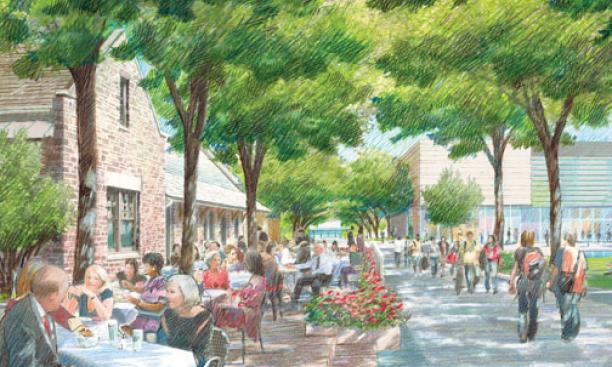

After a long and often contentious battle, the University has received local zoning approvals required to move ahead with the arts and transit project planned for the area south of McCarter Theatre.
“It’s a shame that it took five years to get to this night,” Princeton Borough Council President Kevin Wilkes ’83 said after the council approved the zoning by a 3–2 vote Dec. 6, “but there was a lot of hard work to get done to get the issues resolved.” The council’s action came three weeks after the Princeton Township Committee voted unanimously to approve the zoning for the project, which straddles the boundary of the borough and township.
The next step for the project is site-plan approval from the Regional Planning Board, with detailed plans expected to be submitted by the University in the spring.
The new complex will house the Lewis Center for the Arts, providing teaching, rehearsal, performance, and administrative spaces for music, theater, and dance. The first phase of the project includes extensive work to clear the site and move roads and parking lots to make room for a large U-shaped building, designed by Steven Holl Architects, around an open performing arts courtyard. To the south would be a transit plaza, including a new Dinky station and Wawa food market. The existing Dinky station buildings would be renovated to house a restaurant and café.
The first phase is likely to take five years and cost more than $300 million, according to Robert K. Durkee ’69, University vice president and secretary, who said that fundraising is being pursued. A performing arts hall and additional academic space are envisioned in future phases.
The University’s determination to move the Dinky 460 feet to the south as part of the project brought a bitter response — and a legal challenge — from some area residents, but Durkee said he hopes that the zoning actions will provide an opportunity “to try to improve the lines of communication” with local officials this year. In January 2013, the two municipalities become one, the result of a vote for consolidation in the November election.
